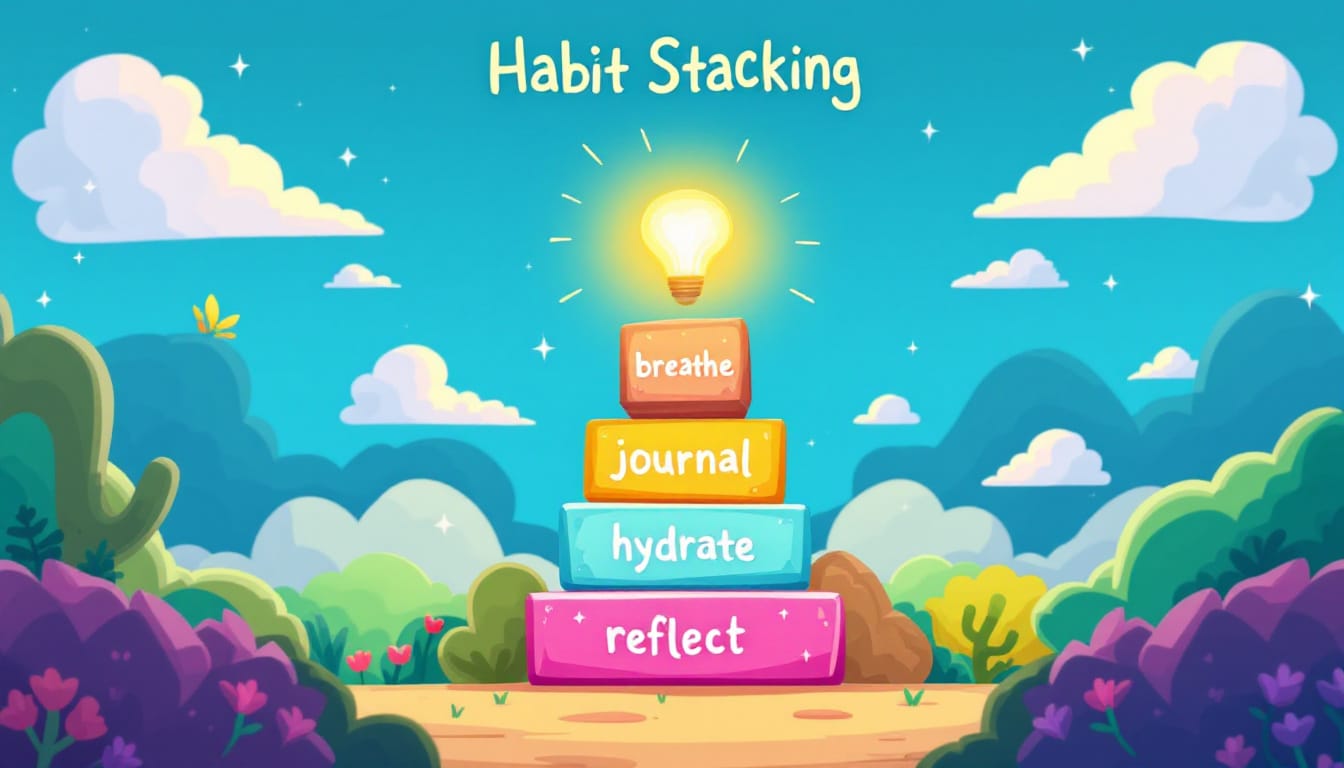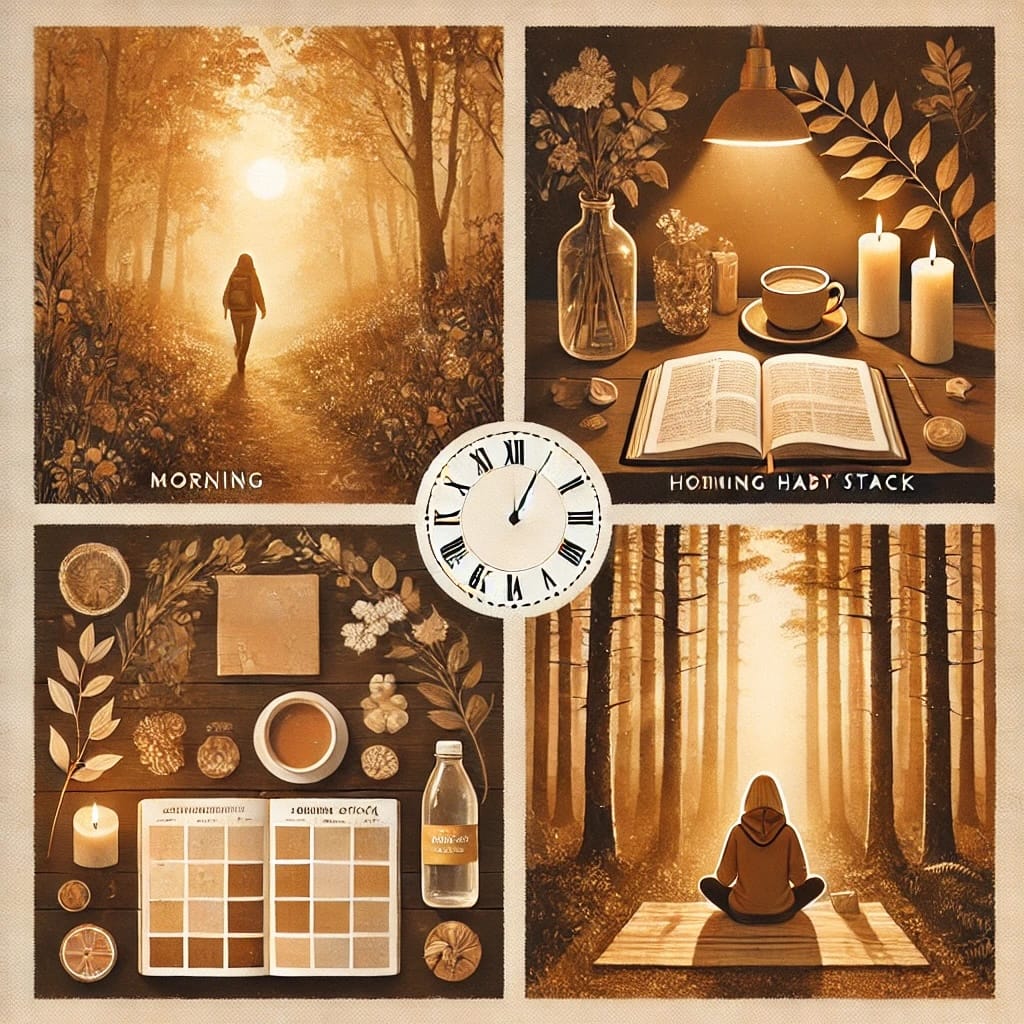How Habit Stacking Helps You Heal: Simplify Routines to Reduce Stress and Find Emotional Balance
Healing doesn’t have to be overwhelming. Discover how habit stacking—linking small, intentional routines to your day—can reduce stress, foster balance, and simplify your path to emotional well-being.

Healing from emotional struggles, trauma, or chronic stress often feels like summiting one of Maine’s rugged mountains—daunting, exhausting, and impossible without the right approach. But instead of attempting the entire climb at once, what if you took it one small step at a time? That’s where habit stacking comes in. By attaching new healing habits to structured routines you already do, you create steady footholds on your journey—helping you find balance and relief without adding unnecessary weight to your pack. Learn more about how routines help you thrive and heal.
Simple, intentional, and approachable, habit stacking is a way to anchor ourselves during life’s storms. By linking healing habits to routines you already have, it reduces overwhelm and helps foster emotional stability. Whether you’re sipping coffee on a crisp Maine morning or taking a quiet walk through the pines, habit stacking can help you create space for rest and recovery without disrupting life’s essential flow.
What the Heck is Habit Stacking Anyway?

(Spoiler: It’s not as complicated as it sounds.)
Habit stacking is a simple but powerful method of creating new routines by linking them to existing habits. It’s like lobster traps along the Maine coast—functional, simple, and built to catch results. Rooted in behavioral psychology, this technique is like using well-worn trails to reach new heights. It’s an especially valuable tool for those managing emotional exhaustion or trauma since it minimizes decision fatigue and allows healing behaviors to become second nature, like following a familiar hiking route.
The Science Behind Habit Stacking: Why Your Brain Will Thank You (Because your brain loves shortcuts and hates chaos.)

Our brains are highly efficient, much like an experienced hiker who instinctively follows a trail’s markers. Habit stacking capitalizes on the cue-routine-reward cycle, reinforcing positive behaviors through repetition. Even small actions, such as taking a deep breath after tying your hiking boots, can signal safety to your nervous system, gradually reducing the fight-or-flight response and enhancing emotional resilience. Small cues, like taking a cleansing breath after lacing your hiking boots, engage the parasympathetic system, sending a message to your body: ‘You’re safe.’ Over time, these patterns rewire your emotional baseline, easing stress responses much like streams etch pathways through Maine’s rugged terrain.
Why Habit Stacking Works for Emotional Healing
For those navigating mental health challenges, habit stacking offers:
- Less Overwhelm – Simplifies routines, reducing decision fatigue.
- A Sense of Control – Creates consistency and predictability, like following a well-marked trail.
- Incremental Progress – Small wins build confidence and stability over time, like reaching trail checkpoints on your way to the summit.
Aligning Habit Stacking with Your Healing Priorities
Rather than overwhelming yourself with an unrealistic pace, focus on habits that support emotional recovery—like mindfulness, deep breathing, or gratitude journaling. Keep them small, sustainable, and, most importantly, gentle on your energy—like choosing the right gear for your journey.
One way to make the most of habit stacking is to incorporate mindfulness. Try it with these ocean-inspired breathing exercises.
How to Create Routines That Feel Like a Hug, Not a Chore

Your healing journey shouldn’t feel like an exhausting expedition. Here’s how to design low-pressure, effective habit stacks:
- Anchor habits to existing routines (e.g., pairing meditation with your morning coffee, like adjusting your hiking pack before setting out).
- Keep it short and simple—no need to scale the hardest peak on day one.
- Be flexible—adjust your habits based on your emotional terrain.
My Personal Habit Stacking Experience: A Morning Routine That Works
Mornings set the tone for my entire day, and having a structured routine keeps me on track—especially since I struggle with time management. Once my alarm goes off, I know exactly what needs to happen:
- Bathroom & Brush Teeth – No decisions, just automatic action.
- Take Meds – Built into my bathroom routine so I never forget.
- Get Dressed – Clothes are already laid out the night before.
- Grab Drinks for the Road – Hydration ready to go.
- Phone, Wallet, Glasses, Keys – (I’m sure there’s a song about this.) Everything lands on the kitchen table for easy access.
This 30-minute routine ensures I can leave the house on time, unrushed, and with everything I need. When I stick to it, my day flows smoothly. When I don’t? Chaos. Multiple trips back inside, missed appointments, and the feeling of being off balance. Having this routine means that even on tough mornings, I can switch to autopilot and still get the essentials done.
How to Begin Habit Stacking Without Overwhelming Yourself

(Start small, stack smart—your nervous system will thank you.)
Not sure where to start? Follow these steps:
- Identify an Existing Habit: Look for routines you already do daily—brushing teeth, making coffee, stepping outside.
- Choose a Small, Supportive Habit: Pick one that aligns with healing, such as deep breathing, stretching, or setting an intention.
- Stack & Test: Try it out, tweak as needed, and ditch perfectionism—it’s about progress, not racing to the summit.
Habit Stack Ideas for Emotional Healing: Tiny Rituals That Make a Big Difference

Morning Habit Stacks (AKA: Little Things That Make Mornings Less Awful.)
- While making coffee: Take three deep breaths, like pausing to appreciate the mountain air before a hike.
- After brushing teeth: Say one affirmation or intention for the day, like checking your trail map before heading out.
- While stepping outside: Take a moment to listen to the sounds of nature—whether it's the rustling pines, a flowing stream, or birds greeting the morning.
Evening Habit Stacks (Unwind like a pro: easy habits for your bedtime routine.)
- After skincare routine: Write one positive thing from your day, like reflecting on a scenic view from a long trek.
- After turning off screens: Listen to a 5-minute meditation, like sitting quietly by a fire after a long day outdoors.
- Before bed: Open a window or step outside for a deep breath of fresh Maine air to ground yourself before sleep.
Avoiding Common Habit Stacking Mistakes: Lessons I Learned the Hard Way
To set yourself up for success, avoid these pitfalls:
- Trying to Stack Too Much at Once – Start small with one new habit, like pacing yourself on a strenuous climb.
- Choosing Overly Ambitious Habits – Keep it manageable, even on tough days—some days, you hike the ridge; some days, you simply enjoy the view.
- Skipping Self-Reflection – Regularly check in to ensure your habit stacks are effective and aligned with your needs, like recalibrating your route when necessary.
Picture yourself overlooking Camden Hills as the sun sets or dipping your toes in the cool waters of Moosehead Lake. Healing through habit stacking is much like this—steady, calming, and rooted in the beauty of your surroundings. Healing is a journey, not a sprint to the summit. Habit stacking helps you build emotional resilience, one step at a time. Start small, stay flexible, and give yourself grace—because real growth happens through steady, intentional shifts. Over time, these gentle, supportive habits will anchor you like the Maine mountains—strong, steady, and ever-present on your path to healing.
If healing had a secret sauce, it’d probably taste like habit stacks with a sprinkle of patience. Start small, build momentum, and watch it all blend into something that feels good. Oh, and don’t keep those brilliant (or hilariously failed) habits to yourself—let’s hear all about them. What’s working? What’s... not? Sharing is caring, especially when we’re all cheering each other on. Keep stacking and keep healing—you’re already ahead of the game.

#Habit
#Healing
#HabitStackingForHealing
#DED
